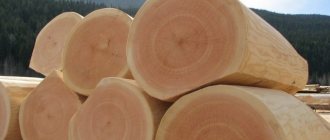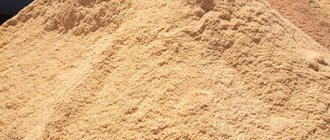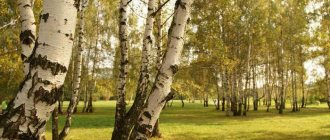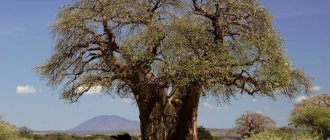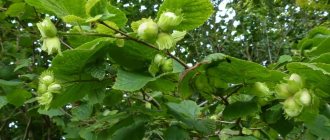Cedar (lat. Cedrus) is a tree of the Pine family, genus Oligotopic.
Needles, nuts, bark and resin are excellent for healing various diseases. They can also be used to create healing medicines.
In nature, Siberian cedar has become widespread in the eastern and southern regions. In particular, it can often be found in the Himalayas. This species was naturalized on the southern coast of Crimea, as well as in Odessa.
Features of cedar harvesting and storage
The main raw material for harvesting cedar is its fruits, namely nuts. Previously, the residents of Taiga did only this. That's why there are several ways to harvest pine nuts.
It was possible to get fruits from low trees or specially tilt them. Many people knock down nuts with stones. Since such fruits contain more oil, they need to be stored in the refrigerator or freezer, otherwise they will spoil. By ensuring airtight packaging, you can store nuts for more than six months. Unshelled nuts can be stored for 6 to 12 months.
Cedar - breadfruit
So, back in the 16th century, near Yaroslavl, on the lands of the Tolga Monastery, a cedar grove the size of a tithe was planted. About fifty of these trees are still alive and bear fruit profusely, although they are over 400 years old. Nowadays cedar forests in European regions amount to thousands of hectares.
There is something to love and cherish for cedar. A special microclimate is created in the cedar forest, and therefore it is always rich in berries, mushrooms, useful herbs, and animals. Pine nuts are an excellent natural product. They contain a large percentage of fat, proteins, carbohydrates, microelements, and vitamins. From them cedar oil is obtained, which can compete with olive oil.
Siberians lovingly call cedar breadfruit. They take care of the cedar forests adjacent to the villages and turn them into forest gardens. They say that in the old days, a tithe of cedar forest was equal in value to a cow.
The widespread industrial development of the taiga, which began in the current century, has resulted in great trouble for cedar. First of all, because cedar is very convenient for logging. Its trunks are “cubescent” and “racing”. They have no equal in the taiga. Some trees produce up to ten cubic meters of wood. And what a one! Soft, nicely colored, easy to process, convenient for any wood craft. You can make anything from cedar wood; log house for the house, door and frames for it, furniture, household utensils. The housewife calmly hides any of her new items in a cedar chest or closet. The moth will not eat it, since the fragrant resinous smell will drive away the pest. Cedar planks are the most enviable raw material for pencil factories. Cedar wood has excellent resonance properties. Pianos, harps, and guitars are made from it.
They say that in the last century, the Germans offered Siberian merchants a seemingly very profitable contract for the supply of oil. But under the indispensable condition that it will be packed in cedar barrels. Then it turned out that the contract was a trick. The oil container went to a musical instrument factory, and foreign traders received more money for it than they paid for the oil.
In addition to all this, good cedar trees grow along rivers, that is, in places convenient for harvesting. He cut down a tree and let it go downstream, it will float to its destination on its own. Needless to say, what all these advantages turned out to be for the cedar, for the rivers, for the animals and birds that he protected.
Foresters have long understood that cedar forests cannot be treated with the usual standards of loggers. In a cedar forest, all the land and everything it produces is important. Taken together, the useful products that a living cedar forest produces are, by all standards, immeasurably more valuable than its beautiful and very valuable wood when clear-cut.
R. Bobrov
Medicinal properties and composition of cedar
In folk medicine, many healing qualities of cedar are found. This can be confirmed by Vedic, popular science and Christian literature. Ked is unique in its kind, which is why it is used in many medicinal recipes. For medicinal purposes, branch buds, pine needles, shells, resin and the nuts themselves are used. Based on the nuts, medicines and tinctures are created that help overcome diseases of the bladder, nervous system and kidneys.
Using milk from cedar fruits you can cure tuberculosis.
Eating pure nuts will help improve your body's condition and make you feel better. If you take a handful of nuts every day, you can not only overcome many diseases, but also extend your life.
Resin or resin is used as medicine. It has a bactericidal effect and promotes the healing of wounds and ulcers. The nut shell is also of great value.
Healing capabilities of oil
Oil is made from nuts. This thick amber-colored liquid with a nutty aroma is a full-fledged analogue of olive oil. For minimal contact with air, it is better to keep it in a glass container with a narrow neck in a cool and dark place.
Natural antioxidants that are in its composition save the product from rancidity, but still, to extend the shelf life, the rules must be followed.
The sediment that eventually appears at the bottom is not dangerous to humans: it contains useful phospholipids and microelements.
Cedar oil helps control cholesterol levels and promotes weight loss. The presence of terpenes in the product provides such capabilities.
The oil contains many substances: vitamins A, B1, B2, B3 (PP), B6, D, E, F
The use of cedar in folk medicine
Cedar resin helps in the treatment of sore throat. To do this, you need to wrap cotton wool around a stick, soak it in resin and anoint the tonsils. You can also rub it on inflamed areas. You can apply 5 drops of the product to the affected area. You can repeat such procedures after 5 hours.
For the flu, you can use oleoresin to rub your chest, arms, legs and back. It is also acceptable to use a small amount of the product. It can be rubbed along and under the nose. You can repeat the procedure after 5 hours. To prevent influenza, oleoresin can be instilled in 5 drops in the mouth 3 times a day.
If you soak gauze in oleoresin and apply it to the burn site, you can reduce the risk of blistering. For dry eczema, you can prepare a mixture of oleoresin and grease and apply it to problem areas of the skin. Please note that the course of treatment must last at least 21 days.
Recipes from cedars
Cedar can be used to reduce weight. Taking pine nuts indicates a decrease in appetite, as well as a supply of calories to the body. You can eat nuts 30 minutes before eating the main course. This will lead to partial saturation of the body.
The tree is also very useful for increasing potency. 100 grams of nuts need to be ground and diluted with 500 ml of water. You need to drink liquid once a day.
With the help of cedar you can cure almost any disease of the internal organs. Add a small amount of water to the pine nut kernels and beat the mass with a mixer. You can drink it instead of tea several times a day.
If you add cedar to tea, it will give it a delicate nutty taste and also help strengthen your immune system. And if you pour vodka over the peeled nuts and leave this mixture for 15 days, after which you take 50 grams per day, you will forever forget about colds and viral diseases.
For varicose veins, you can use traditional cedar oil to lubricate the veins.
You can also simply eat nuts.
Siberian cedar (Pinus sibírica R. Mayr.)
1. Bakhtin, Yu. V., V. V. Budaeva, A. L. Vereshchagin, E. Yu. Egorova, E. E. Zhukova, A. S. Saratikov. The effectiveness of using cedar oil in the complex treatment of patients with arterial hypertension // Nutrition Issues. — 2006. — No. 1. — P. 51-53
2. Biological encyclopedic dictionary (edited by M.S. Gilyarov). M. 1986. 820 p.
3. Vorobyov V.N., Dubovenko Zh.V., Pentegova V.A. On the chemotaxonomic characteristics of mountain forms of Pinus sibirica Du Tour.// Plant Resources, 1971, issue 4, pp. 564-567
4. Gromova A. S., Lutsky V. I., Tyukavkina N. I. Aromadendrin, apigenin and kaempferol from Pinus sibirica wood. // Chemistry of natural compounds, 1971, No. 2, pp. 203-204
5. Gromova A. S., Lutsky V. I., Tyukavkina N. A. Phenolic acids of bast Abies nephrolepis, Pinus sibirica and P. sylvestris. //Chemistry of natural compounds, 1977, No. 2, p. 277
6. Gromova A. S., Syrcina A. I., Tyukavkina N. A. Hydroxybenzoic acids of the bark of Pinus sibirica // Chemistry of natural compounds, 1971, No. 6, p. 824
7. Dolgodrovova S.Ya., Chernyaeva G.N., Peryshkina G.I., Zaprometov M.N. Phenolic compounds of the bark of Pinus sibirica // Chemistry of natural compounds, 1971, No. 1, pp. 15-17
8. Egorova E. Yu. Biochemical prerequisites for the use of cedar oil in the development of cosmetics // Oil and fat industry. — 2006. — No. 6. — P. 33-35
9. Egorova E. Yu. Scientific and practical aspects of production, examination and use of pine nut oil: monograph; AltSTU. - Biysk: AltGTU Publishing House, 2011. - 345 p.
10. Egorova E. Yu. Scientific substantiation and practical implementation of the development of food products using pine nut processing products.// Abstract. dissertation for the degree of Doctor of Technology. Sci. Kemerovo 2012, 40 p.
11. Egorova E. Yu., V. V. Budaeva, N. V. Belyaeva, Yu. V. Bakhtin. Cosmetic value of pine nut oil // Oil and fat industry. - 2005. - No. 4. - P. 38-40
12. Egorova E. Yu., Poznyakovsky V. M. Nutritional value of pine nuts of the Far East. // News of universities. Food technology. -2010. - No. 4. - P. 21-24.
13. Egorova E. Yu., Roshchina N. N. Terpenes as a component of the physiological activity of pine nut oil. Technologies and equipment for the chemical, biotechnological and food industries /Alt. state tech. University named after I. I. Polzunova. - Biysk, 2009. - pp. 289-293
14. Zhukova E. E., Budaeva V. V., Egorova E. Yu., Erokhina G. V., Bizyukova A. V. Pine nut oil and the possibilities of its use // Oils and fats, 2005, No. 2, p. .9
15. Elenevsky A.G., M.P. Solovyova, V.N. Tikhomirov // Botany. Systematics of higher or terrestrial plants. M. 2004. 420 p.
16. Ivanova S.Z., Medvedeva S.A., Zelenikina N.D. Flavonoid compounds of Siberian pine needles. // Chemistry of natural compounds, 1979, No. 4, p. 578
17. Ivashin S. A., Pisarev V. D., Oliferenko T. I., Lopatkina N. V. Microelements of needles and cones of Pinus sibirica // Chemistry of natural compounds, 1981, No. 5, p. 675
18. Karetnikov P.V. On the chemical composition of pine nuts and their effect on gastric secretion. Author's abstract. Diss. for an academic degree, Irkutsk, 1967, 23 p.
19. Karetnikov P.V., Dmitrichenko M.M. On the content of some microelements in pine nuts // Nutrition Issues. 1966. - t. 25. - No. 5. - p. 79-80.
20. Kashtanova N.K., Lisina A.I., Pentegova V.A. New diterpenes - isocembrene and isomembrol - in Pinus sibirica oleoresin // Chemistry of natural compounds, 1968, No. 1, pp. 52-53
21. Kashtanova N.K., Lisina A.I., Pentegova V.A. Composition of the neutral part of Pinus sibirica.VI resin Isocembrine and isomembrol // Chemistry of natural compounds, 1969, No. 1, pp. 10-14; Koropachinsky I. Yu., Vstovskaya T. N. Woody plants of Asian Russia, Novosibirsk, Publishing House SB RAS branch "Geo", 2002, 707 p.
22. Lisina A.I., Volsky L.N., E.F. Kalistratova, Pentegova V.A. Extractive substances of the nucleus of Pinus sibirica R. Mayr./Izv. Sib. department of the USSR Academy of Sciences. Ser. chem. nauk.1967, issue 6, no. 14, pp. 113-117
23. Lisina A.I., Rezvukhin A.I., Pentegova V.A. Composition of the neutral part of the resin of Pinus sibirica R.Mayr. II Acid-containing compounds of the high-boiling neutral part of cedar resin. // Chemistry of natural compounds, 1965, No. 4, pp. 250-256
24. Lisina A.I., Yasnetskaya S.M., Pentegova V.A. Bicyclic diterpene acids from Pinus sibirica oleoresin // Chemistry of natural compounds, 1972, No. 3, p. 300-303.
25. Lutsky V.I., Gromova A.S., Tyukavkina N.A. Phenolic components of the bark of Pinus sibirica and P.sylvestris. //Chemistry of natural compounds, 1970, No. 3, p. 367.
26. Lutsky V.I., Tyukavkina N.A., Shostakovsky S.F. Pinocembrin and pinostrobin from the nucleus of Pinus sibirica // Chemistry of natural compounds, 1968, No. 6. P. 383.
27. Medvedeva S. A., Ivanova S. Z., Babkin V. A., Rezvukhin A. I., Volkova I. V. Lignan glycoside from Pinussibirica needles // Chemistry of natural compounds, 1985, No. 4, p. 477; Medvedeva S. A., Ivanova S. Z., Gorokhova V. G., Votintseva S. K., Babkin V. A., Tyukavkina N. A. Lignan glycosides of needles of some species of the Pinaceae family // Chemistry of natural compounds, 1983, No. 3, p. 91-92
28. Osipov V.I. Organic acids of tissues of Siberian cedar and Siberian larch // Materials of the conference on physiology. and biochem. plants, dedicated 50th anniversary of the formation of the USSR. Krasnoyarsk, 1972, p.46-48
29. Pentegova V. A., Kashtanova N. K., Rezvukhin A. I., Kolipova E. I. Composition of the neutral part of Pinussibirica resin. IV Structure of the sesquiterpene hydrocarbon sibirene // Chemistry of natural compounds, 1966, No. 4, pp. 239-244.
30. Pozharitskaya O. N., Shikov A. N., Laakso I., Dorman H. Zh.D., Makarov V. D., Hiltunen R., Tikhonov V. P. Polyphenolic compounds of Pinus sibirica (Pinaceae) seeds // Plant resources, 2007, issue 2, pp. 39-46
31. Raldugin V. A., Demenkova L. I., Pentegova V. A. Group composition of Siberian pine resin // Chemistry of natural compounds, 1984, No. 5, pp. 677-678
32. Raldugin V. A., Pentegova V. A. Isocoupressic acid and its new esters from Pinus sibirica needles // Chemistry of natural compounds, 1984, No. 1, pp. 125-126
33. Raldugin V. A., Zubtsova N. I., Shmakova L. M., Demenkova L. I., Ivashin S. A., Pentegova V. A. Some terpenoid components of Siberian pine // Chemistry of natural compounds, 1983, No. 1, pp. 112-113
34. Roslyakov Yu. F., Gonchar V. V., Shulvinskaya I. V., Zaichenko E. Yu. Application of Siberian pine pine kernels (PINUS SIBIRICA) in the production of flour confectionery products for functional purposes // Fundamental Research No. 7, 2007 p.89-90
35. Roshchina N. N.; Egorova E. Yu. Zhivitsa of coniferous species as one of the promising areas in the production of functional foods and dietary supplements. VII international scientific and practical conference and exhibition “Analytical measurement methods and instruments in the food industry. Expertise, assessment of quality, authenticity and safety of food products” / MGUPP. - Moscow, 2009. - pp. 83-88.
36. Rush V. A., Lizunova V. V. Macro- and microelements of pine nuts // Nutrition Issues. 1969. - t. 28. - No. 2. - p. 52-55.
37. Rush V. A., Lizunova V. V. Some patterns of the chemical composition of Siberian cedar seeds // Plant resources, 1969, issue 4, pp. 519-527
38. Syrcina A.I., Tyukavkina N.A., Gromova A.S., Lutsky V.I., Voronov V.K. Oxystilbenes from the bark of Pinus sibirica // Chemistry of natural compounds, 1972, No. 5, p. 600 -603.
39. Tyukavkina N.A., Lutsky V.I., Dzizenko A.A., Pentegova V.A. Extractive phenolic compounds of the core of Pinus sibirica // Chemistry of natural compounds, 1968, No. 4, pp. 249-250.
40. Usenko N.V. Trees, shrubs and vines of the Far East. -Khabarovsk: Book publishing house, 1984.
41. Chepeleva G. G., Annikova A. A. Content of polyunsaturated fatty acids in pine nuts growing in the central and southern regions of the *Krasnoyarsk Territory // Bulletin of the Krasnoyarsk State University, 2006, pp. 40-43
42. Shostakovsky S.F., Tyukavkina N.A., Lutsky V.I., Borodina N.M. Oxystilbenes of Pinus sibirica and Pinus sylvestris // Chemistry of natural compounds, 1969, No. 1. P.48-49.
43. Yartseva N. A., Dolgodrovova S. Ya., Degree R. A. Tannins of Siberian cedar bark // Plant resources, 1971, issue 4., p. 588-589.
44. Pinus sibirica (Rupr.) Mayr – Siberian cedar // FloraUSSR. In 30 volumes / Ch. ed. acad. V. L. Komarov; Ed. volumes M. M. Ilyin. M.L.: Publishing House of the USSR Academy of Sciences, 1934. T. I. P. 163-164.
45. Zadernowski R., Naczk M., Czaplicki S. Chemical composition of Pinus sibirica nut oils // European journal of lipid science and technology, 2009, vol. 111, no. 7, pp. 698-704.
Chemical composition of the pine nut kernel
Calorie content: 875 Kcal;
Proteins: 13.7 g.
- tryptophan: 3.4 mg
- lecin
- valine
- lysine: 12.4 mg
- methionine: 5.6 mg
- glutamic acid
- histidine
- proline
- serine
- glycine
- threonine
- alanine
- aspartic acid
- phenylalanine
- cystine
- arginine: 21 mg
- tyrosine
Fat: 68.4 g.
- saturated: 4.9 g.
- monosaturated: 18.7 g.
- polyunsaturated 34.1 g.
Carbohydrates: 13.1 g.
- starch
- glucose
- sucrose
- fructose
- dextrins
- pentosans
- cellulose
Vitamins:
- Vitamin A (retinol): 1 mcg
- b-carotene: 17 mcg
- vitamin B1 (thiamine): 0.4 mcg
- vitamin B2 (riboflavin): 0.2 mcg
- vitamin B3 (niacin): 4.4 mcg
- Vitamin B5 (pantothenic acid): 0.3 mcg
- vitamin B6 (pyridoxine): 0.1 mcg
- Vitamin B9 (folacin): 34 mcg
- Vitamin C (ascorbic acid): 0.8 mcg
- Vitamin E (tocopherol): 9.3 mcg
- vitamin K: 53.9 mcg
Microelements
- calcium: 16 mg
- iron: 5.5 mg
- magnesium: 251 mg
- phosphorus: 575 mg
- potassium: 597 mg
- zinc: 6.4
Also contains copper, manganese, silicon, vanadium, molybdenum, nickel, iodine, tin, boron, barium, titanium, silver, aluminum, cobalt, sodium iodides.
Use for weight loss
In small quantities, nuts help you lose weight.
- Firstly, they perfectly remove excess water,
- Secondly, they quickly give you a feeling of fullness,
- Thirdly, they fill the body with slow-burning protein, which fills the body with energy for quite a long time.
But a large amount of treats can have the exact opposite effect.
Cedar furniture
Kitchen sets, cabinets, sideboards, beds, tables and chairs - any furniture is made from cedar. She looks noble and expensive. Cedar is well processed, sanded, polished and painted. The furniture turns out to be strong and of good quality. The texture of the wood is easily visible under the covering translucent materials.
Cedar furniture is used for many years, moths do not grow in cabinets, and things do not grow moldy. The only thing worth noting is the impressive weight of cedar furniture. The tables are massive and heavy. Therefore, most often only countertops are made from the material.
What are real cedars?
True cedar is a coniferous tree of the Pine family, the genus of which contains only four species. The height of the trees ranges from 25 to 50 meters, they have a spreading, pyramidal or umbrella-shaped and shallow root system. The needles are collected in bunches, each of which consists of thirty to forty needles, having a three or tetrahedral shape.
The bark is dark gray, the wood is aromatic, and therefore the essential oil of cedar is of extremely high quality, yellowish or reddish in color, resistant to rotting, and due to its strong resin content, insects avoid it.
The cones are single, erect, ovoid or barrel-shaped, have a length of 5 to 10 cm, and a width of about six. They ripen in the second or third year after their appearance, and it is interesting that they do not crumble immediately, but throughout the autumn-winter period. Cedar seeds are triangular in shape, thin-skinned, resinous, 12 to 18 mm long and inedible.
Healing properties of sandalwood141544.925
All cedars are heat-loving plants, common in subtropical latitudes, but do not take root in temperate zones (therefore, Russian cedars are actually pine trees). They prefer to grow in loamy soils, in mountainous areas, at an altitude of 1.3 to 4 km from sea level next to spruce, fir, pine and other conifers. But it does not tolerate strong sea winds well and almost does not take root on dry calcareous slopes.
In total, the genus of cedars has four species:
- Atlas - has a pyramidal crown, needles of bluish-green or gray color, grows in northwestern Africa, in the Atlas Mountains;
- Lebanese - is a symbol of Libya, depicted on the national flag; currently, in the country, which was previously considered the main exporter of wood, only a few trees remain;
- Himalayan - has a pyramidal shape and thin bluish-green needles, grows in southern Asia, from it, like other trees of the genus, aromatic cedar essential oil is obtained;
- Short-coniferous - has pubescent or bare shoots and shorter dark green needles than other species, can be seen in Cyprus.
Botanical characteristics
Appearance . Siberian cedar is a vigorous tree (up to 50 m) with a dense evergreen crown. On young trunks, the bark is smooth, brownish-gray; on adult cedars, the bark is cracked, scaly, and darker in color.
The needles are needle-shaped, triangular, hard, dark green or blue-green. The needles on the shoots are collected in whorls of 5 pieces (unlike ordinary pine, which has only 2 needles in a bunch). The lifespan of needles is up to 6 years.
Seeds . Cedar pine is a monoecious plant. Each tree develops both male and female flowers in the form of spikelets. Pollination occurs in June, after which the entire female spikelet is transformed into a cone, consisting of an axis and hard scales attached to it. There are 2 seeds in the axils of the scales. The seeds develop over 2 years and ripen only the following September. Mature cones grow up to 13 cm in length and have a diameter of up to 8 cm. Mature seeds - pine nuts - are dark brown, about 1 cm long.
Cedar pine grows slowly. Trees begin to produce their first seeds at the age of 30 years. Siberian cedar is a long-liver. The average lifespan of a tree is up to 500 years (specimens up to 850 years old are known).
Spreading . Siberian pine forests in Russia occupy vast areas on the plains and mountains of the northeastern region of the European part, as well as in Eastern and Western Siberia.
A closely related species of cedar pine is dwarf pine, another name is dwarf cedar.
In Russia, it is distributed in the Far East and Eastern Siberia. Elfin wood is found in Japan, Korea, China and Mongolia. This is a coniferous evergreen shrub with a curved trunk and creeping branches that rise above ground level to a height of no more than 1–2 meters. Dwarf dwarf has hard bluish-green needles 4–8 cm. Dwarf dwarf cones are similar to the cones of Siberian pine, but smaller. They also ripen in 2 years, and dwarf seeds are called “pine nuts.”
How to grow and care for a cedar tree
Cedar gives the garden a look of solidity and power, firmness and cheerfulness. The tree does not need constant care.
It is necessary to plant seedlings in a well-lit area at a distance of 4-5 m. The crown should be developed on a low stem. It should be branched and have many peaks.
Germination of nuts lasts 2 years. They need to be planted in the fall, then they will begin to sprout in March-April. However, there is another way of planting: stratify the nuts in moisture, soak them for a day, and plant them in the spring.It is necessary to break out the buds that grow on the sides in March-April, before the growing season begins. The area for cedar should be large and have suitable soil.
If you plant using the second method, whorls will appear in 4-5 years, the tree will need shade. Cedar can also grow in sphagnum bogs. The tree is practically independent of the surrounding temperature - it tolerates both frost and drought.
Use in cosmetology
Pine nuts will become a magical tincture of youth and beauty. They:
- Slow down the aging process;
- Combat visible problems of the epidermis;
- Protect from ultraviolet radiation;
- Moisturizes and maintains skin elasticity;
- Promotes rapid growth of hair and nail plates.
Cedar oil will bring the greatest benefit; you can use it to make creams, ointments, masks, shampoos and balms yourself, and finely crushed kernels and seeds will become the basis for homemade scrubs.
A decoction of the shells gives your hair a luxurious chestnut shade.
